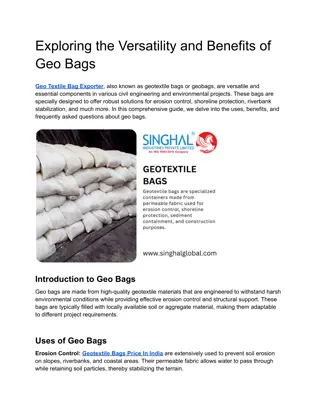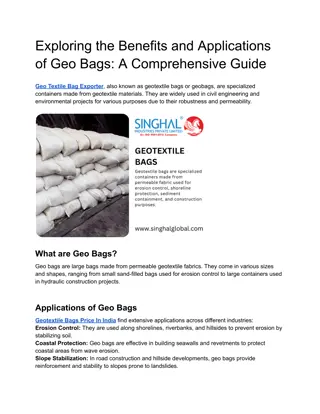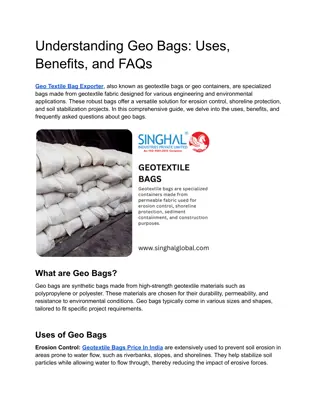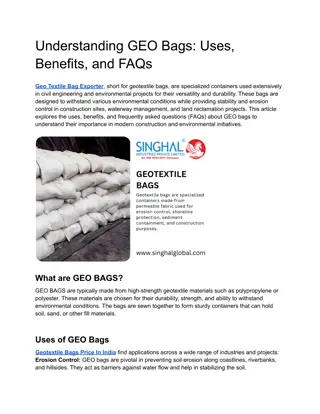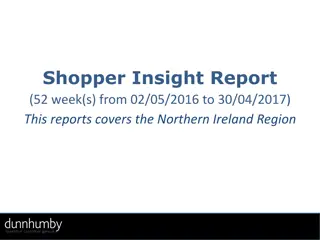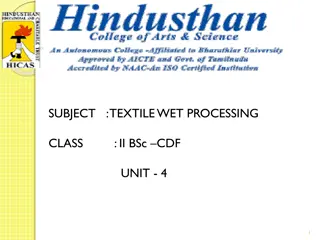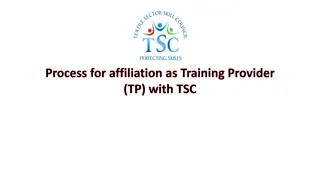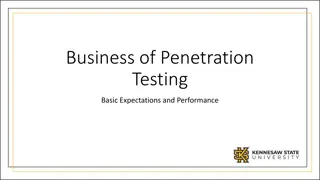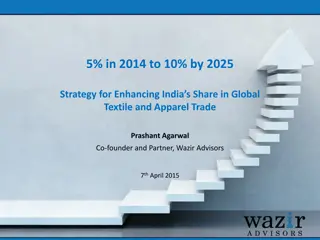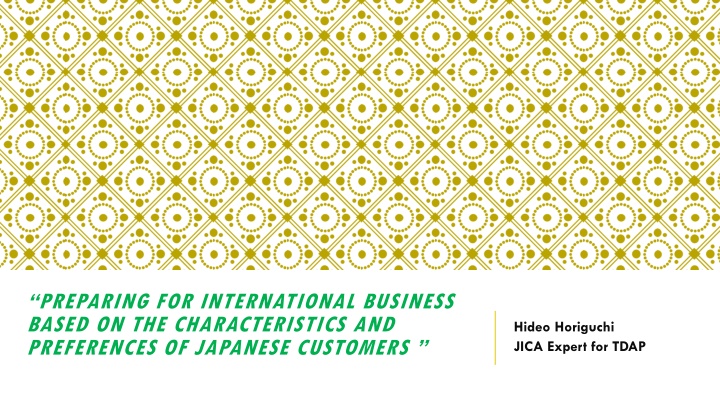
Japanese Consumers for International Business Success
Learn about the characteristics and preferences of Japanese customers in preparation for international business ventures. Explore market insights, trade agreements, and industry trends to tailor your approach for success in the Japanese market.
Uploaded on | 1 Views
Download Presentation

Please find below an Image/Link to download the presentation.
The content on the website is provided AS IS for your information and personal use only. It may not be sold, licensed, or shared on other websites without obtaining consent from the author. If you encounter any issues during the download, it is possible that the publisher has removed the file from their server.
You are allowed to download the files provided on this website for personal or commercial use, subject to the condition that they are used lawfully. All files are the property of their respective owners.
The content on the website is provided AS IS for your information and personal use only. It may not be sold, licensed, or shared on other websites without obtaining consent from the author.
E N D
Presentation Transcript
PREPARING FOR INTERNATIONAL BUSINESS BASED ON THE CHARACTERISTICS AND PREFERENCES OF JAPANESE CUSTOMERS Hideo Horiguchi JICA Expert for TDAP
1. JAPAN/EAST ASIA/ASEAN EU 446million UK6.6million EAST ASIA -CHINA 1.39billion -S.KOREA 51.27million UNICLO -China:6Shops -S.Korea:3Shops MUJI -China:256Shops -S.Korea34Shops UNICLO:18+UK5 Shops MUJI:31+UK11Shops USA JAPAN 126.02million 327. 75million Visitors Arrival 2019(Jan.-Dec.) From China: 9.6million (Total 31.9million) Import of Clothing 2018 (Jan.-Dec. Million yen) China Share:59.9% UNICLO:13Shops MUJI:17Shops UNICLO:5 Shops MUJI:47 Shops 3.8million 27.5% ASEAN 650million Source: MOFA, JNTO, JTIA, UNICLO HP, MUJI HP
2. Emerging Market Source: US ASEAN BUSINESS COUNCIL,INC Growth Projections https://www.usasean.org/why-asean/growth
3. Japan EPA Network December 27, 2019 MOFA EPA/FTA in Japan In Force or Signed Singapore, Mexico, Malaysia, Chile, Thailand, Indonesia, Brunei, ASEAN, Philippines, Switzerland, Viet Nam, India, Peru, Australia, Mongolia, TPP12 (signed), TPP11, EU 18 Under Negotiation RCEP, Turkey, Colombia, Japan-China-ROK 4 Others (Negotations suspended) GCC, Korea, Canada Source: Ministry of Foreign Affairs of Japan
4. Pakistan FTA Network Dec.2019 Pakistan China FTA:2007 Second Phase:Dec.2019 GSP+ (2014 ) GSP Preferential Trade Agreement (2006) EU China Japan GSP Trade&Investment Framework Agreement (2003) Iran Turkey (Under Negotiation) USA Pak Afghanistan Transit Trade Agreement Pakistan ASEAN Mauritius Preferential Trade Agreement (2007) Pakistan Malaysia FTA&EIA (2008) Pakistan Indonesia Preferential Trade Agreement (2013) Pakistan Thailand FTA (Under Negotiation) SAFTA (2006) Sri Lanka Pakistan Sri Lanka FTA (2005) Source: Government of Pakistan Ministry of Commerce, WTO
5. Japan Textile Industry 1960& Current Items Share(%) Japan s Export (1960) Textile Industry (2017) *Establishments: 5.7 *Employees: 2.8% *Import Penetration ratio (2018) 97.7% of Clothing Commodities Export Share 30.2% Textile Machinery (Vehicle) 25.3% (2.6% ) Source: Ministry of Economy.Trade & Industry information Jan.2020 ( ) Metal 13.8% OEM (Original Equipment Manufacturer) 4.2 Chemical 26.5% Others Material Fabrics Production site Re-Export Donor Contents GSP
Reference 1: Law 2020 1 1 Japan's Tariff Schedule as of January 1 2020 https://www.customs.go.jp/english/tariff/2020_1/index.htm Household Goods Quality Labeling Act http://www.japaneselawtranslation.go.jp/law/detail/?id=2217&vm=04&re=01&new=1 Act on Control of Household Products Containing Harmful Substances http://www.japaneselawtranslation.go.jp/law/detail/?id=1949&vm=04&re=01&new=1
Reference 2: GSP Origin Rule I. Origin Criteria Wholly obtained or produced goods Goods satisfied substantial transformation criterion Origin criteria Specific Change in tariff classification criterion manufacturing or processing operation criterion Value-added criterion II. Consignment Criteria III. Procedural Provisions Source: JAPAN CUSTOMS
Reference 3: Specific manufacturing or processing operation criterion (source:List of Conditions to Qualify as an Originating Good under Japanese GSP (Product Specific Rules) https://www.mofa.go.jp/files/000077857.pdf) Chapter 61 Articles of apparel and clothing accessories, knitted or crocheted Manufactured from woven fabrics, felt, nonwovens, knitted or crocheted fabrics or lace of Chapter 50 to 56 or 58 to 60 ex. Chapter 62 Articles of apparel and clothing accessories, not knitted or crocheted, excluding products of heading 62.13 to 62.17 Manufactured from woven fabrics, felt, nonwovens, knitted or crocheted fabrics or lace of Chapter 50 to 56 or 58 to 60 62.13 Handkerchiefs Manufactured from chemical products, from products of heading 47.01 to 47.06, or 50.01, or from natural textile fibres (excluding raw silk), man-made staple fibres or textile fibre waste 62.14 Shawls, scarves, mufflers, mantillas, veils and the like Manufactured from chemical products, from products of heading 47.01 to 47.06, or 50.01, or from natural textile fibres (excluding raw silk), man-made staple fibres or textile fibre waste 62.15 Ties, bow ties and cravats Manufactured from textile yarn 62.16 Gloves, mittens and mitts Manufactured from textile yarn 62.17 Other made up clothing accessories; parts of garments or of clothing accessories, other than those of heading 62.12 Manufactured from textile yarn 62.16 Gloves, mittens and mitts Manufactured from textile yarn 62.17 Other made up clothing accessories; parts of garments or of clothing accessories, other than those of heading 62.12 Manufactured from textile yarn 62.17 Other made up clothing accessories; parts of garments or of clothing accessories, other than those of heading 62.12 Manufactured from textile yarn
Reference 4: Certificate of Origin (GSP) FORM A Sample 1. Goods consigned from (Exporter s business name, address, country) Reference No GENERALISED SYSTEM OF PREFERENCES CERTIFICATE OF ORIGIN (Combined declaration and certificate) FORM A Issued in e.g. PAKISTAN (country) See Notes overleaf 2. Goods consigned to (Consignee s name, address, country) 3. Means of transport and route (as far as known) 4. For official use
NOTES (2013) I. Countries which accept Form A for the purposes of the Generalized System of Preferences (GSP): Australia* Belarus Canada Iceland Japan New Zealand** Norway Russian Federation Switzerland including Liechtenstein*** Turkey United States of America**** European Union: Austria Belgium Bulgaria Croatia Cyprus Czech Republic Denmark Estonia Finland France Germany Greece Hungary Ireland Italy Latvia Lithuania Luxembourg Malta Netherlands Poland Portugal Romania Slovakia Slovenia Spain Sweden United Kingdom 8. Origin criterion (see Notes overleaf) (3) Iceland, the European Union, Japan, Norway, Switzerland including Liechtenstein, and Turkey; enter the letter "W" in Box 8 followed by the Harmonized Commodity Description and coding system (Harmonized System) heading at the 4-digit level of the exported product (example "W" 96.18).
5. Item number 6. Marks and numbers of packages 7. Number and kind of packages, description of goods 9. Gross weight or other quantity 10. Number and date of invoices 8. Origin criterion (see Notes overleaf W + HS 4-digit e.g. W 6214


